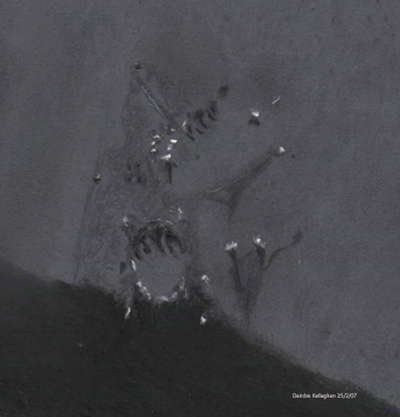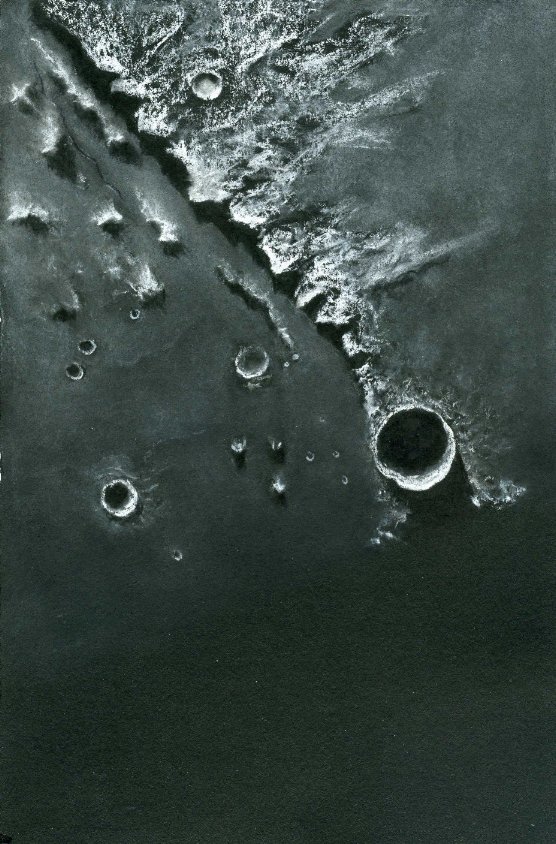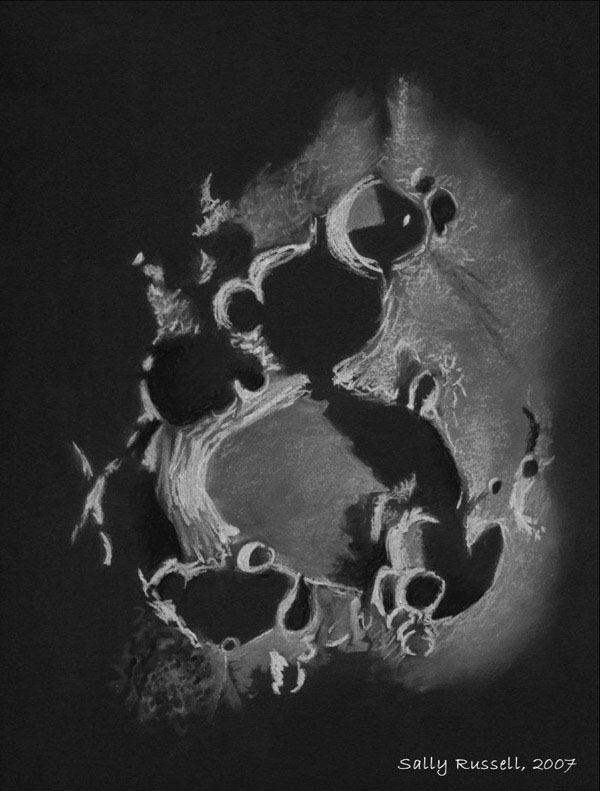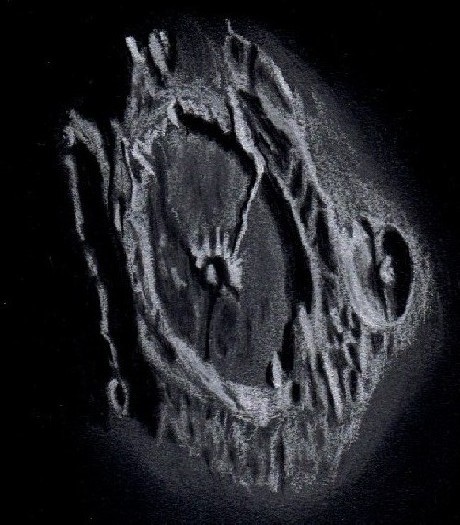
When I looked outside that Sunday evening there was not a cloud in the sky and the eight day moon was shining down on me from a very favourable angle. There were far too many desirable sketches available, and my eyes darted from Rupes Recta toward the south, to Eratosthens and the shadows and highlands spinning off it, and further north to Plato sitting on the darkness of the terminator. It was a difficult choice, but I settled on Plato just because it had slightly more interesting shadows and also some very bright highlights emerging from the darkness near its northern rim. A long thin pointed shadow poured from the base of Mons Pico toward the terminator and also from another high area to its right as I viewed it. These shadows lengthening in the hour it took to do this sketch. Just above Mons Pico as I viewed (south is up) a change in the lunar surface was apparent in the form of an Eiffel tower shaped greyness which swept up to and finished at Piazzi Smith. Mons Piton sits with Piazzi in area across from Montes Alpes which had several sun kissed high points. I observed the needle like Vallis Alpes cutting a sharp gash in the surface through rugged lunar land, lit slightly on its northern edge. Feathery shadows set of the shape of Plato and detached from its northern rim, very bright high areas warmed themselves as they became uncloaked from the blackness.
Deirdre Kelleghan
President
Irish Astronomical Society 1937 – 2007
Sketch details:
February 25th 2007
20:45UT – 21:45UT
53.2000ºN, 6.1000º W
200mm/F6/6.3mm Plossel/193X
8.19 days
Seeing 2
Trans Average
300gm Daler R paper/DR soft pastels/Black watercolour pencil/wooden toothpick
www.irishastrosoc.org
Plato and Sheep
Nestled on the plains between Mare Imbrium and Mare Frigoris lies the nearly lava filled crater Plato. This 100 km, dark pool of frozen lava has a darker tone than the lava that filled the Imbrium basin. Crater counts indicate that the lavas that filled Plato are actually younger than the Mare lavas of Imbrium. The history of emplacement goes something like this: the Imbrium basin was created first, followed by the impact that created Plato, and then the gradual fill in of basaltic lava that flooded Imbrium and much of the existing basin rings and superposed craters. This left untouched some of the isolated massifs that are now known as Plato’s Sheep, including the towering Montes Pico (2500 meters high), Piton (2000 meters high), and the Tenneriffe Mountains (2500 meters high). Finally came the slow lava inundation of Plato itself. Above Plato and rendered with wonderful precision is the Vallis Alpes, a large graben (extension) fault which probably formed as a result of the original impact that created Imbrium. Dee’s beautiful sketch clearly depicts the drama that awaits the observer when the telescope is turned to this region as the terminator passes through.







